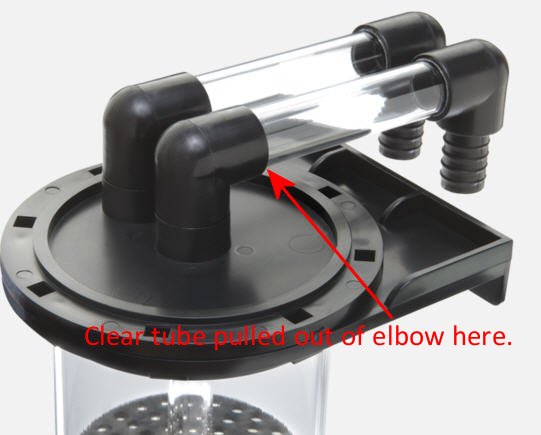lol, now we are opening a whole new can o' worms.
Refugiums can be set up as a part of the sump or even a totally separate tank. Some refugiums can even be pretty enough to be display tanks! If you do get a separate tank for a refugium, get it drilled for a 1" bulkhead so that it's easier to plumb into your system/sump. Corals ARE part of the bioload. You have to feed your corals like you feed your fish... some LPS readily take feedings of mysis and brine shrimp. Other corals prefer live cultures of phytoplankton and rotifers. More difficult corals to feed, feed almost exclusively on zooplankton. For the beginner/novice aquarist, a small bottle of liquid refrigerated live phytoplankton is a good supplement for filter feeding corals and other inverts.
A sump is basically a small container to hold all of your equipment and excess water when you turn off your return pump. That's as simple of a definition as I can state. A refugium can be part of the sump, but doesn't necessarily have to be - as long as the sump can hold all of the excess water from both your display and your refugium - go with a separate tank for a refugium - heck, you could put decorative macroalgaes, seahorses, various hermit crabs, filter feeders, etc in your refugium. A refugium is used to manage excess nitrate and phosphate (dissolved organic nutrients) by way of growing macroalgaes. Macroalgae takes the nitrate and phosphate into it's tissues, where you can readily harvest it out of your refugium. (some people bag and sell it, but there are restrictions) It's also a great place for copepods and other zooplankton to hide and thrive without predation by fishes and other inverts. Refugiums are on a light timer that is opposite of your display tank. A refugium gets about 16 hours of light a day, and your display tank gets the other 8. The reason it's on an opposite timer is that it helps stabilize pH.
Deep sand beds and really deep sand beds can be used in refugiums, I have seen it done before - however, long term it's not really a viable solution to denitrification. Over time, anaerobic bacteria breaks down nitrate into nitrogen gas and secretes hydrogen sulfide (deposits it in black clumps that you see at the bottom of the really deep sand bed) hydrogen sulfide can be leached back into the aquarium if something - anything disturbs the sandbed that far down... it will cause a tank crash. (I've seen it happen!) The way modern day aquarists use really deep sand beds is in 5g buckets (usually leftover salt buckets. You would put one PVC water feeding tube in the top of the bucket, on a very low setting so as not to disturb the sand - and a bulkhead in the side or bottom of the bucket (with the standpipe all the way to the top) to drain the bucket. Most of these systems have to incorporate TWO BUCKETS. You will have to take one bucket every year or every other year and clean it out and wash it up and/or replace the sand and leave the other bucket still running on the system. Now days, there are even better methods of nitrate removal than this - but since you asked ....
I have to add this one on here because it's my favorite thing to use... an algae scrubber. Algae scrubbers use a roughed up plastic screen that has water flowing over it and a couple of CFL bulbs that shine light at it. It grows hair algae and other algaes to remove nitrate and phosphate from the system. It also has the capacity to cool your water, superoxygenate your water and stabilize your pH. It also grows copepods and removes heavy metals from your system. It does not pull out coral food like protein skimmers do - it just sucks up inorganic and organic nitrate and phosphate. Though, it has to be built correctly, and the screen has to be cleaned every 7 days without fail. They also cost a little bit more in electricity per month - but the benefits to me outweigh the cons.
So, in summation, A sump is a container of water that is used to house equipment and water overflow. A refugium is used for nitrate and phosphate removal by way of growing macroalgae and stableizes pH. Really Deep Sand Beds are no longer necessary or debateable - and have their place in aquaria, however there are better ways of dealing with waste then this currently. Algae scrubbers do not remove coral food and can only benefit your aquarium - and can even be used in conjunction with a skimmer.
Blah. It's like 1AM right now and here I am on SWF.com instead of in bed. Can someone say insomnia?

